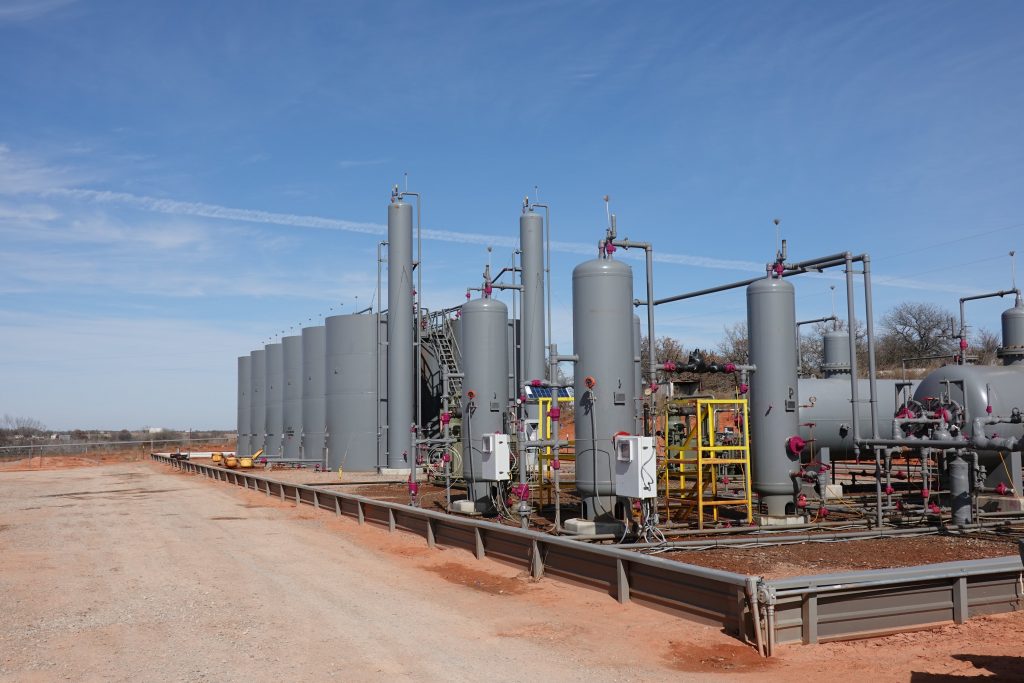
Electric vehicles (EVs) are becoming popular and are seen as a cleaner option for the future. But how does this affect the oil and gas industry that powers much of our energy use? Let’s explore how these traditional energy sources are linked to the growing EV market in three key ways.
Oil and Gas Components in EVs
Even as we move towards cleaner energy, the oil and gas industry still plays a vital role in making electric vehicles.
For instance:
- Building, setting up, and keeping EV charging stations running require materials and energy that come from oil and gas.
- The key component of an electric vehicle, the lithium-ion battery, depends on electrolytes made from petrochemicals.
- Graphite and other materials from oil and gas are used in the electrodes of lithium-ion batteries.
- Oil and gas are used to make the plastics and polymers that form both the inside and outside parts of an electric vehicle.
- The rubber in tires is made from petrochemicals.
- Electric motors and powertrains in EVs use cooling systems and lubricants that come from petroleum.
- Fluids from petroleum are used in the hydraulic systems of EVs, like those needed for power steering and brakes.
This shows a complex relationship where the oil and gas industry supports the very vehicles that are meant to replace it.
Contact DW Energy
Want to learn more about oil & gas investing? Our expert team can provide you with more information or schedule a consultation to talk about diversifying your investment portfolio.

Impact of EVs on Oil Consumption
Electric vehicles challenge the need for oil. For example, President Biden aims for half of all new cars sold to be electric by 2030. Assuming that 25% of all vehicles will be EVs by that year, and none of these will use gasoline, this shift could lead to a 25% reduction in gasoline-powered cars. This scenario suggests a 17% decrease in U.S. oil consumption by 2030. If oil production adjusts to match this reduced demand, we could see a similar 17% drop in crude oil production, marking a significant decrease in U.S. oil output.
While domestic demand in the U.S. could decrease by 17%, increased crude oil exports to regions like Southeast Asia may offset this drop and sustain overall U.S. supply levels.
Comparing Emissions: EVs vs. ICEs
It’s important to look at the full environmental impact of electric and traditional cars. EVs have no emissions from driving, but making and charging them releases a lot of greenhouse gases. Studies show that the total emissions over an EV’s life are lower than those of traditional cars, especially as more renewable energy is used.
For oil and gas investors, understanding the vital role these resources play in the lifecycle of electric vehicles is key to grasping the broader energy picture. While EVs contribute to long-term emission reductions, their current dependence on fossil fuels highlights the enduring value of oil and gas. This dependence emphasizes that any shift away from these traditional energy sources will be gradual, dependent on the development of new technologies and more renewable energy.
The shift to electric vehicles introduces complex challenges and changes for the oil and gas industry. Recognizing these complexities helps everyone make better choices about energy, vehicle production, and the environment. The move to EVs is about more than just new technology; it’s about changing our energy system to support these new vehicles sustainably.
Contact dw energy
Sources:
“US eases tailpipe rules, slows EV transition through 2030,” Reuters, https://www.reuters.com/sustainability/boards-policy-regulation/us-eases-tailpipe-rules-slows-ev-transition-through-2030-2024-03-20/ “Life Cycle Emissions: EVs vs. Combustion Engine Vehicles,” Visual Capitalist, https://www.visualcapitalist.com/life-cycle-emissions-evs-vs-combustion-engine-vehicles/
